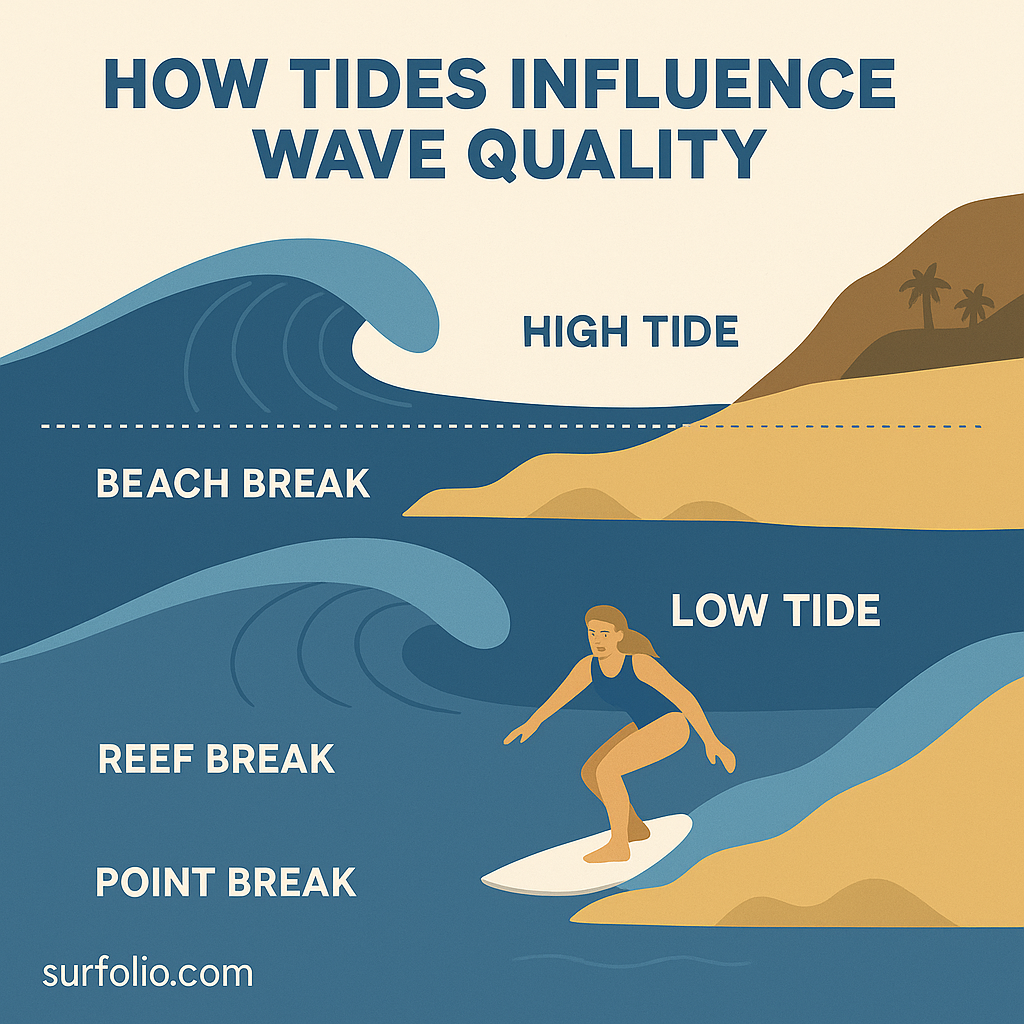
The Connection Between Tides and Surfing
Every surfer knows that not all waves are created equal — and tides play a major role in shaping how waves break. The rise and fall of the ocean can transform a perfect surf spot into a messy lineup (or vice versa) within just a few hours. Understanding tides isn’t just for oceanographers; it’s a key part of reading the surf and choosing the best time to paddle out.
What Causes Tides
Tides are the result of gravitational forces between the Earth, Moon, and Sun. As the Moon orbits Earth, its gravitational pull causes the ocean to bulge — creating a high tide on the side facing the Moon and another on the opposite side. The Earth’s rotation then moves coastlines through these bulges, leading to regular rising and falling water levels.
Most coastal regions experience two high tides and two low tides every 24 hours, known as a semi-diurnal tide cycle.
How Tides Affect Wave Formation
1. Depth and Break Shape
As the tide changes, so does the water depth over reefs, sandbars, or points.
- At high tide, deeper water can cause waves to lose energy and break slower or closer to shore.
- At low tide, the shallower water allows waves to break earlier and more powerfully.
Each surf spot reacts differently depending on its underwater topography (or bathymetry).
2. Sandbars and Reefs
- Beach breaks often perform best on mid to low tides because the waves break crisply over sandbars. Too much water (high tide) can drown them out.
- Reef breaks usually favor higher tides since they need extra water depth to cushion the reef and allow a cleaner takeoff.
- Point breaks can work across multiple tide levels but may change shape and section speed as the tide moves.
3. Wave Quality and Consistency
Tides don’t just affect where waves break — they influence how they form, peel, and hold shape. Some waves become faster and hollower on a dropping tide, while others go mushy and slow.
Local knowledge is everything: experienced surfers know the “magic tide” that brings their favorite spot to life.
The Role of Tidal Range
Not all tides rise and fall the same amount. The tidal range — the vertical difference between high and low tide — determines how dramatically conditions change.
- Areas with large tidal ranges (like Northern California or the UK) see big shifts in surfability.
- Areas with small tidal ranges (like parts of Southern California or Indonesia) have more consistent conditions.
Spring and Neap Tides
Tidal strength also changes over the lunar cycle:
- Spring tides (during new and full moons) have the largest ranges, causing more dramatic changes in wave behavior.
- Neap tides (during quarter moons) produce milder variations, leading to steadier conditions.
Reading Tide Charts Like a Pro
Before heading out, check the tide chart for your surf spot. Many surf apps and forecasts (like Surfline or Magicseaweed) display tide height and timing alongside wave reports. Note the tide height (in feet or meters) and plan to surf during the optimal tide window for your break.
Combining this knowledge with swell direction, period, and wind conditions helps you predict wave quality with precision.
Final Thoughts
Tides are the ocean’s rhythm — and great surfers learn to move with it. Understanding how tides influence wave quality can mean the difference between an epic session and a frustrating one. The more time you spend observing your local breaks, the more in tune you’ll become with the ocean’s natural pulse.
